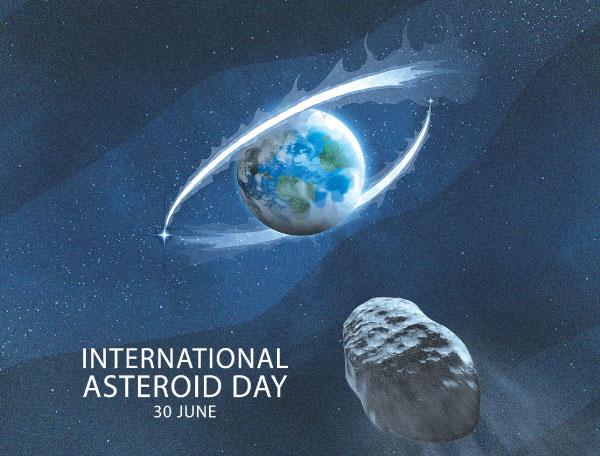
Have you heard about asteroids ? They are huge rocks wandering in space, probably fragments of planets that were thrown about when the planets were formed. There are a lot of them out there in space and some of them could be headed our way. If they collide with Earth, there could be a massive explosion and all life on the planet will be affected.
In fact, scientists say this is how the dinosaurs were wiped out 65 million years ago. A huge asteroid struck Earth and the resulting explosion blacked out the sun, leading many species to disappear from Earth. Sunshine is needed for all life on Earth, so life goes out without it. 
If you love movies, you would have seen Armageddon and Deep Impact, two movies about an asteroid hitting the Earth. Since these movies were released around 20 years ago, possibly none of you was around at the time. But you can always track down the DVDs and watch them. The heroes in these movies have to prevent the asteroid from hitting the Earth.
Indeed, these Near-Earth objects (NEOs) represent a huge threat to our planet. There are over 16,000 NEOs that can put the Earth in danger. Hence the United Nations has designated June 30 (yesterday) as “International Asteroid Day” to increase awareness about asteroids among children and adults alike. Asteroid Day events will feature science as well as government and private-sector initiatives to study asteroids, and efforts to develop greater detection, tracking and deflection techniques.
The Tunguska asteroid event in Siberia, Russian Federation, on June 30, 1908, was the largest asteroid impact in recorded history. This is why the Asteriod Day is marked on June 30 every year. Much later, On February 15, 2013, an asteroid measuring 18 meters entered the skies over Russia. This was the biggest asteroid event recognized since the 1908 Tunguska blast in Russian Siberia. There was also an asteroid impact over Botswana recently. An asteroid from another star system was found near Jupiter recently.
Asteroids about 500 feet in diameter could wipe out a large city or a couple of small counties. The world has recognized NEO as a global issue demanding an international response. The purpose of the International Asteroid Day is to raise public awareness about the asteroid impact hazard and also about the actions to be taken in case of an imminent asteroid impact.
There are several ways in which we will be able to fend off an asteroid.
 The most extreme is destroying it with a nuclear missile, as shown in many movies. It is thus vital to detect the asteroid early so that we can think of what should be done about it. But some have suggested that people could settle down on big asteroids one day. Scientists have discussed the possibility of building cities that are self-sufficient on the surface of these giant space rocks.
The most extreme is destroying it with a nuclear missile, as shown in many movies. It is thus vital to detect the asteroid early so that we can think of what should be done about it. But some have suggested that people could settle down on big asteroids one day. Scientists have discussed the possibility of building cities that are self-sufficient on the surface of these giant space rocks.
In the meantime, we are sending robotic probes to study the asteroids. The Hayabusa 2 asteroid explorer is due to reach Ryugu (1999 JU3), its destination, around the middle of 2018. The second asteroid sample-and-return mission of the Japanese Aerospace Exploration Agency (JAXA), expects to answer questions about the early days of the solar system. Astronomers estimate that the asteroid is about 900 meters across, is roughly spherical and rotates once every 7.6 hours. It is thought to contain water and organic materials. Over 18 months Hayabusa 2 will deploy three rovers and a German-European lander.
They will work independently on the surface to gather and send information on Ryugu’s composition and history. Ryugu samples are due to arrive back on Earth in Dec ember 2020. If you regularly use a telescope to check a sky at night and notice an unusual object, tell about it to an adult.
It could be an asteroid headed this way. A simple act can save the world and you will become a hero too.
